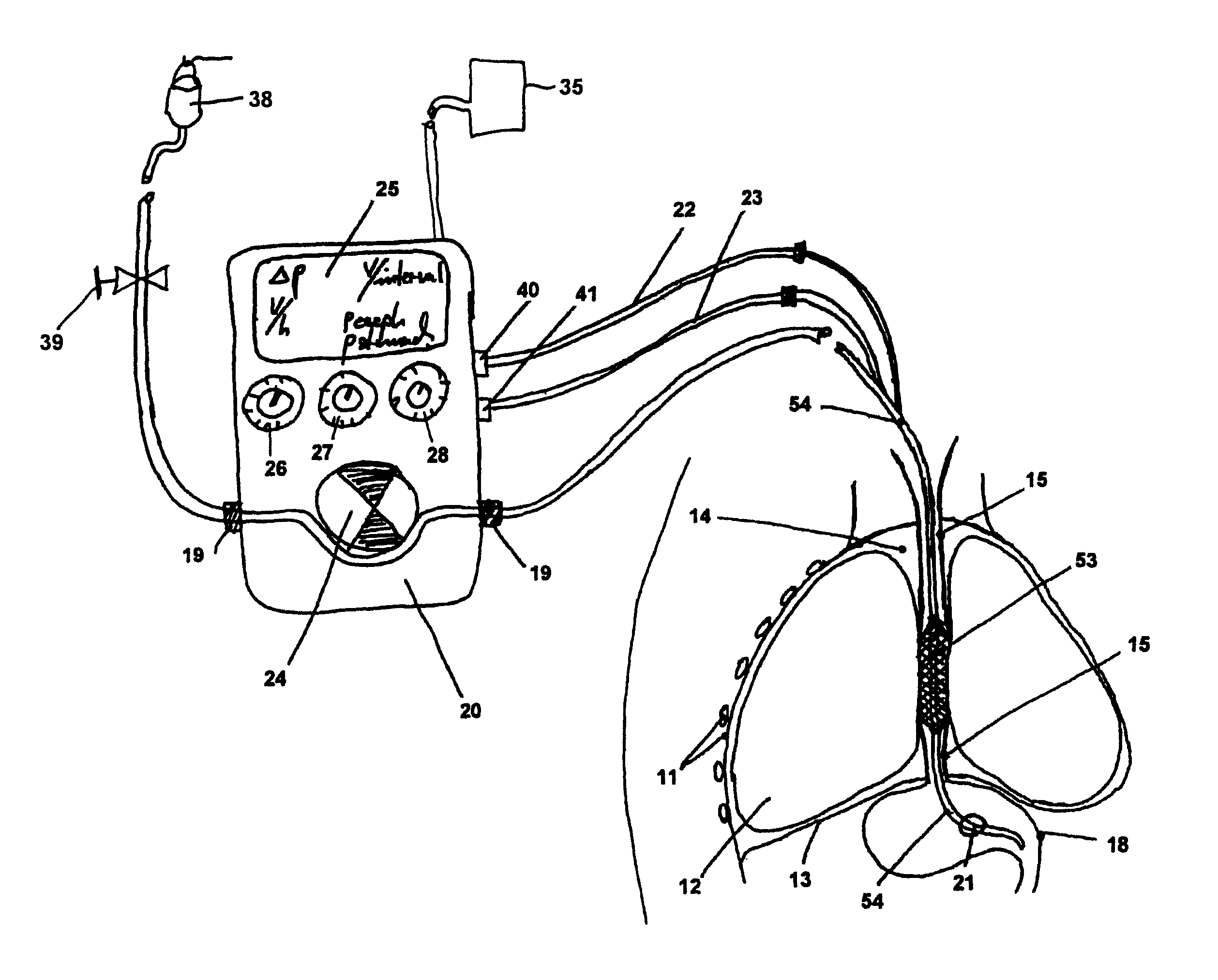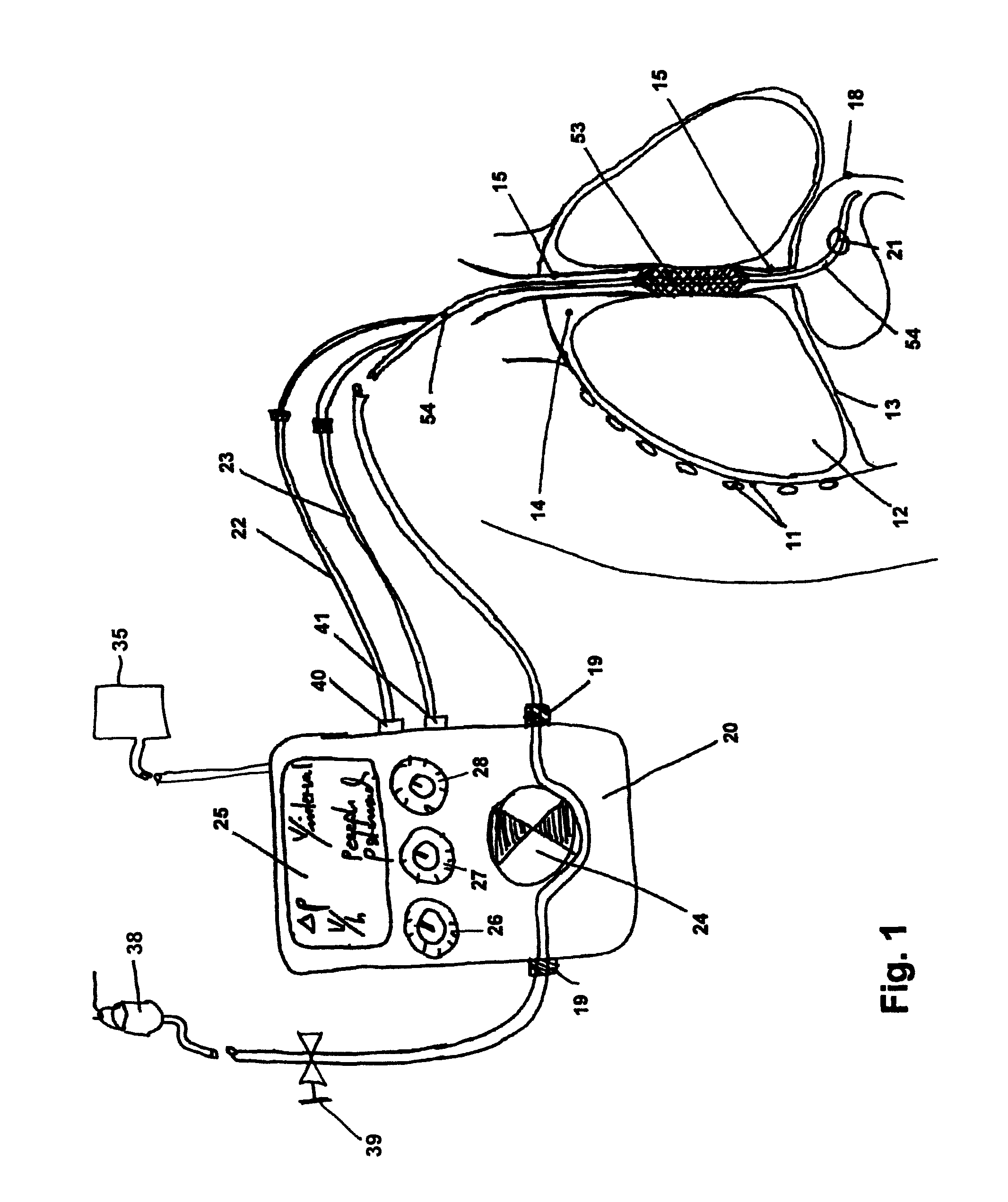Gastro-esophageal reflux control system and pump
a control system and gastro-esophageal technology, applied in the field of gastro-esophageal reflux control system and pump, can solve the problems of insufficient decompression of stomach probes, insufficient decompression of stomachs to permit reflux, and ger in critically ill patients, so as to reduce the effect of gastro-duodenal application of feeding solution and without causing deleterious effects on esophageal structures
- Summary
- Abstract
- Description
- Claims
- Application Information
AI Technical Summary
Benefits of technology
Problems solved by technology
Method used
Image
Examples
Embodiment Construction
[0035]The present invention describes a device and method, which effects a static or dynamical, low irritating, long-term organ compatible and stationary seal function within the esophagus, intending to interrupt the above described free communication of secretions and gastric material between the upper respiratory tract and the gastro-intestinal tract.
[0036]Referring to FIG. 1, which schematically illustrates a cross-section of part of a patient's torso, the patient's chest cavity wall 11, lungs 12, diaphragm 13, intra-thoracic space 14, esophagus 15, and stomach 18 are depicted. Also depicted in FIG. 1 is a presently preferred embodiment of an anti-gastro-esophageal reflux device for use during enteral feeding as it may operate in situ in a patient's thorax in combination with a feeding pump function / unit. As schematically illustrated in FIG. 1, an embodiment of a seal system includes a combination of a gastric tube 54 inserted through the nasal or oral cavity, passing through the...
PUM
 Login to View More
Login to View More Abstract
Description
Claims
Application Information
 Login to View More
Login to View More - R&D
- Intellectual Property
- Life Sciences
- Materials
- Tech Scout
- Unparalleled Data Quality
- Higher Quality Content
- 60% Fewer Hallucinations
Browse by: Latest US Patents, China's latest patents, Technical Efficacy Thesaurus, Application Domain, Technology Topic, Popular Technical Reports.
© 2025 PatSnap. All rights reserved.Legal|Privacy policy|Modern Slavery Act Transparency Statement|Sitemap|About US| Contact US: help@patsnap.com



